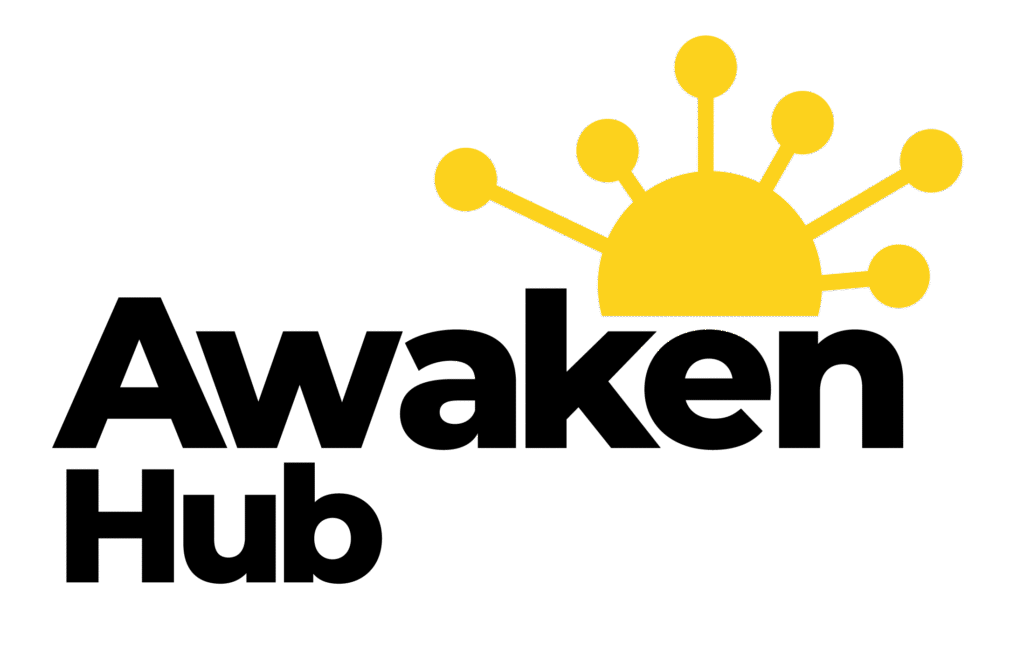Accessibility Guidelines for Websites in Ireland and the EU: Ensuring Inclusive Online Experiences
In the digital age, where the internet serves as a primary source of information and services, ensuring that websites are…
In the digital age, where the internet serves as a primary source of information and services, ensuring that websites are accessible to all users is paramount. Accessibility guidelines are designed to create an inclusive online environment, allowing individuals with disabilities to navigate, understand, and interact with web content effectively. As you delve into the realm of web accessibility, it becomes clear that these guidelines are not merely suggestions but essential standards that promote equality and inclusivity in the digital landscape.
In Ireland, as well as across the European Union, there is a growing recognition of the need for accessible websites. The European Accessibility Act and various national regulations underscore the importance of creating digital spaces that cater to everyone, regardless of their abilities. By adhering to these guidelines, you not only comply with legal requirements but also enhance the user experience for a broader audience.
This commitment to accessibility reflects a society that values diversity and strives to eliminate barriers that hinder participation in the digital world.
Understanding the Importance of Inclusive Online Experiences
Creating inclusive online experiences is vital for fostering a sense of belonging among all users. When websites are designed with accessibility in mind, they empower individuals with disabilities to engage fully with content and services. This inclusivity is not just a moral obligation; it also makes good business sense.
By reaching a wider audience, you can increase customer satisfaction and loyalty, ultimately driving growth and success. Moreover, inclusive online experiences contribute to a more equitable society. When you ensure that your website is accessible, you are actively working to dismantle the barriers that prevent individuals with disabilities from accessing information and services.
This commitment to inclusivity aligns with the principles of the European Union, which advocates for equal opportunities and non-discrimination. By prioritising accessibility, you are playing a crucial role in promoting social justice and ensuring that everyone has the opportunity to participate in the digital economy.
Accessibility Guidelines in Ireland and the EU

In Ireland, the Web Accessibility Directive mandates that public sector websites and mobile applications must meet specific accessibility standards. This directive aligns with the European Accessibility Act, which aims to harmonise accessibility requirements across EU member states. As a website owner or developer, it is essential to familiarise yourself with these regulations to ensure compliance and avoid potential penalties.
The guidelines set forth by the World Wide Web Consortium (W3C) through the Web Content Accessibility Guidelines (WCAG) serve as a foundational framework for achieving web accessibility. These guidelines provide clear criteria for making web content more accessible to people with disabilities, including those with visual, auditory, motor, and cognitive impairments. By adhering to these standards, you can create a website that is not only compliant with legal requirements but also user-friendly for all visitors.
Key Components of Website Accessibility
| Component | Description |
|---|---|
| Text Alternatives | Providing alternative text for non-text content such as images and multimedia |
| Keyboard Accessibility | Ensuring all functionality is available using a keyboard |
| Colour Contrast | Ensuring there is sufficient contrast between text and background colours |
| Headings and Labels | Using clear and descriptive headings and labels for content |
| Navigation | Providing clear and consistent navigation throughout the website |
Website accessibility encompasses various components that work together to create an inclusive online experience. One of the most critical aspects is ensuring that all content is perceivable. This means providing alternative text for images, captions for videos, and ensuring that text is readable by screen readers.
By making content perceivable, you enable users with visual impairments to access information effectively. Another key component is operability, which refers to ensuring that all users can navigate your website easily. This includes providing keyboard navigation options, ensuring that interactive elements are easily accessible, and avoiding time limits that may hinder users’ ability to complete tasks.
Additionally, it is essential to consider understandability; your content should be clear and straightforward, using plain language whenever possible. By focusing on these components, you can create a website that caters to diverse user needs.
Implementing Accessibility Guidelines in Website Design and Development
Implementing accessibility guidelines in your website design and development process requires a proactive approach. It is crucial to integrate accessibility considerations from the outset rather than treating them as an afterthought. This means involving accessibility experts during the planning phase and conducting regular audits throughout the development process.
Utilising accessible design principles can significantly enhance your website’s usability. For instance, choosing colour contrasts that are easy on the eyes and ensuring that fonts are legible can make a substantial difference for users with visual impairments. Additionally, employing responsive design techniques ensures that your website functions well on various devices, accommodating users who may rely on mobile technology for access.
Testing and Evaluating Website Accessibility

Once you have implemented accessibility guidelines in your website design and development process, it is essential to conduct thorough testing and evaluation. This step ensures that your website meets the required standards and provides an optimal user experience for individuals with disabilities. Various tools and resources are available to assist you in this process, including automated accessibility testing software and manual evaluation techniques.
Engaging users with disabilities in testing can provide invaluable insights into their experiences on your website. By gathering feedback from real users, you can identify areas for improvement and make necessary adjustments to enhance accessibility further. Regular testing should be an ongoing practice rather than a one-time event; as technology evolves and new content is added, continuous evaluation will help maintain compliance with accessibility standards.
Consequences of Non-Compliance with Accessibility Guidelines
Failing to comply with accessibility guidelines can have significant consequences for your organisation. In Ireland, non-compliance with the Web Accessibility Directive may result in legal repercussions, including fines or other penalties imposed by regulatory authorities. Beyond legal implications, neglecting accessibility can damage your reputation and alienate potential customers who may feel excluded from your services.
Moreover, non-compliance can lead to missed opportunities in reaching a broader audience. Individuals with disabilities represent a substantial market segment; by failing to accommodate their needs, you risk losing out on valuable customers who seek accessible products and services. Embracing accessibility not only mitigates legal risks but also positions your organisation as a leader in inclusivity and social responsibility.
Resources and Support for Ensuring Inclusive Online Experiences
To support your efforts in creating accessible websites, numerous resources are available within Ireland and the EU. The National Disability Authority (NDA) provides guidance on best practices for web accessibility and offers training programmes for organisations seeking to improve their digital inclusivity. Additionally, the European Commission’s website features comprehensive information on the European Accessibility Act and related initiatives.
Engaging with local advocacy groups can also provide valuable insights into the needs of individuals with disabilities. These organisations often offer resources, workshops, and networking opportunities that can enhance your understanding of accessibility issues. By leveraging these resources and collaborating with experts in the field, you can ensure that your website meets accessibility standards while fostering an inclusive online environment for all users.
In conclusion, embracing accessibility guidelines for websites is not just a legal requirement; it is a commitment to creating an inclusive digital landscape where everyone can participate fully. By understanding the importance of inclusive online experiences, familiarising yourself with relevant regulations, implementing key components of accessibility, conducting thorough testing, and utilising available resources, you can contribute significantly to a more equitable society in Ireland and beyond.
For small businesses in Ireland and the EU, ensuring their websites are accessible is crucial for reaching a wider audience. Accessibility guidelines, such as those outlined in the article “Grants for Small Businesses in Ireland” on The Digital Projects, can help businesses make their websites more inclusive for all users. Additionally, implementing SEO strategies, as discussed in the article “Small Business SEO” on The Digital Projects, can also improve website accessibility by making it easier for users to find relevant information. Generating leads through SEO, as highlighted in the article “SEO Leads Generation” on The Digital Projects, can further enhance a small business’s online presence and reach.
FAQs
What are accessibility guidelines for websites in Ireland and the EU?
Accessibility guidelines for websites in Ireland and the EU are a set of standards and requirements that ensure websites are accessible to all users, including those with disabilities. These guidelines are designed to make websites perceivable, operable, understandable, and robust for all users.
Why are accessibility guidelines important for websites in Ireland and the EU?
Accessibility guidelines are important because they ensure that websites are inclusive and can be accessed by all users, regardless of their abilities. By following these guidelines, website owners can reach a wider audience and provide a better user experience for everyone.
What are some key accessibility guidelines for websites in Ireland and the EU?
Some key accessibility guidelines for websites in Ireland and the EU include providing text alternatives for non-text content, ensuring keyboard accessibility, providing clear and consistent navigation, and making sure that content is easily understandable and compatible with assistive technologies.
Who is responsible for ensuring that websites in Ireland and the EU comply with accessibility guidelines?
In Ireland and the EU, website owners and developers are responsible for ensuring that their websites comply with accessibility guidelines. This includes government websites, private company websites, and non-profit organization websites.
What are the consequences of not complying with accessibility guidelines for websites in Ireland and the EU?
Failure to comply with accessibility guidelines for websites in Ireland and the EU can result in legal consequences, including fines and legal action. Additionally, websites that do not comply with accessibility guidelines may alienate potential users and customers.











